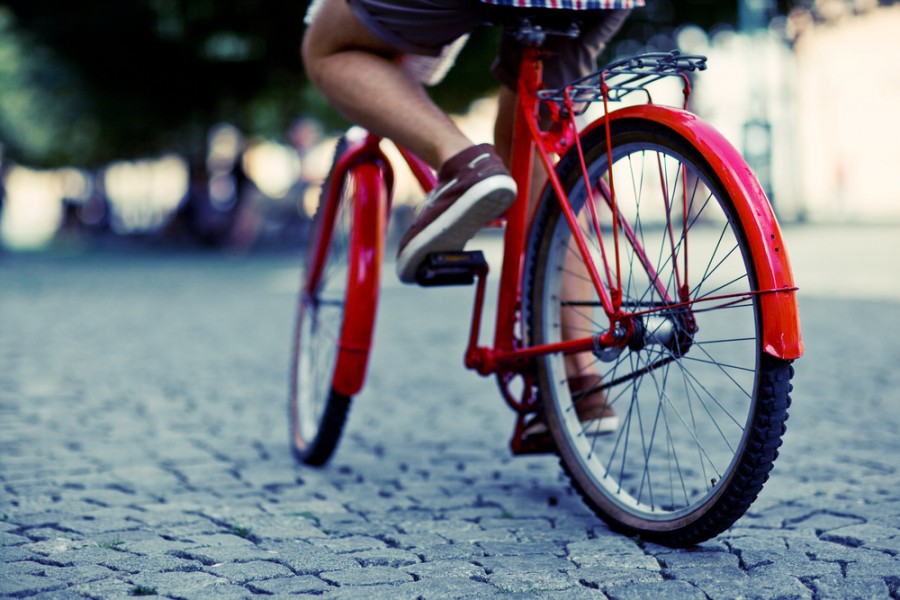Evidence is mounting that it makes sense to rethink our streets and remove barriers to walking and biking. Local jurisdictions should take note and we should support their efforts.
On average, three out of 10 trips we make are less than a mile (a short walk) and half of our trips are less than 3 miles (a short bike ride), yet two-thirds of these trips are made by car.
How would improving our streets to create a system of safe, comfortable and convenient walking and biking connections change how we move through our communities and how would we all benefit?
Health is one of the most significant ways. Providing active transportation options that serve everyone from a mom heading to school with kids in tow to a retired couple heading to the farmers market has vast benefits to our physical and mental health. ODOT and the Oregon Health Authority should be commended for formally recognizing that the health of our community members is inextricably linked to our transportation system and for providing a mechanism to consider health in transportation decisions.
The statistics are alarming. According to the American Public Health Association, the costs of traffic crashes, air pollution and physical inactivity resulting from our transportation system total well over $400 billion annually. Traffic crashes claim on average 30,000 lives nationally and 300 in Oregon. More than one-third of children and adolescents are overweight or obese, and the 8-year-olds of today are the first generation predicted to have a shorter lifespan than their parents, largely because of diseases related to inactivity.
For these reasons and more, communities around the state and around the country are rethinking their transportation systems to provide better options for people to take transit, walk and bike to where they want to go.
Medford, with the help of Connect Oregon funding, continues their efforts to extend the Larson Creek Greenway, a critical facility that provides an alternate route to Barnett Road and connects one of the largest employment and health care areas in the city with the Bear Creek Greenway, the 20-mile spine of our regional non-motorized transportation system.Several local jurisdictions have completed on-street projects that improve key connections and remove barriers between destinations, and many have plans in place for future improvements.
But there’s much more to do to attract the 60 percent of the public who are interested in bicycling but hesitant to ride next to traffic, and the people who want to walk to the store but are hesitant to cross a major intersection on their route. Retrofitting our existing system will not be easy, but it is imperative to connecting key destinations.
One opportunity is to reduce speeds on our streets. Speed plays a huge role in fatality rates. A pedestrian struck at 40 mph has a 15 percent chance of survival, but a pedestrian hit at 20 mph has a 95 percent chance of survival. Speed also determines the comfort level for people walking and biking, and fortunately, there are ways to reduce travel speeds that have minimal impact on travel times through a corridor.
Reducing travel lane widths in urban areas to 10 feet (for reference, the standard freeway lane is 12 feet) can help slow speeds. Road diets that reallocate travel lanes on roadways reduce speeds. Both are simple, cost-effective measures that can provide additional room for sidewalks and bike lanes and make travel safer for all road users.
Along with a quality transit system, these improvements not only save lives, they also attract millennials who demand alternatives to driving and the businesses who desire the talent and creativity that millenials bring to the workforce. Likewise, they attract baby boomers who are increasingly looking to retire in areas where hanging up their keys won’t result in being homebound. Lastly, they help create vibrant downtowns by reducing demands for parking and cars while improving the environment for people and businesses. In fact, projects that create multi-modal streets have been shown to have significant return on investment because they reduce crashes and are also associated with increased property values and higher employment numbers.
We have come a long way and have the bones for a great regional multi-modal system. But critical gaps remain that create uncomfortable and unsafe situations for people walking and biking. Let’s work together to invest in transportation options for all of our community members, which will improve our health, the health of our economy and the health of our next generation.
Jenna Stanke Marmon is chairwoman of the Oregon Bicycle and Pedestrian Advisory Committee. Dan Thorndike, general counsel for Medford Fabrication, is a bicycle commuter and a member of the Oregon Bicycle and Pedestrian Plan Policy Advisory Committee.
Source: Mail Tribune
April 12, 2015
By Jenna Stanke Marmon and Dan Thorndike, photo courtesy of Shutterstock
http://www.mailtribune.com/article/20150412/OPINION/150419947/101087/OPINION











